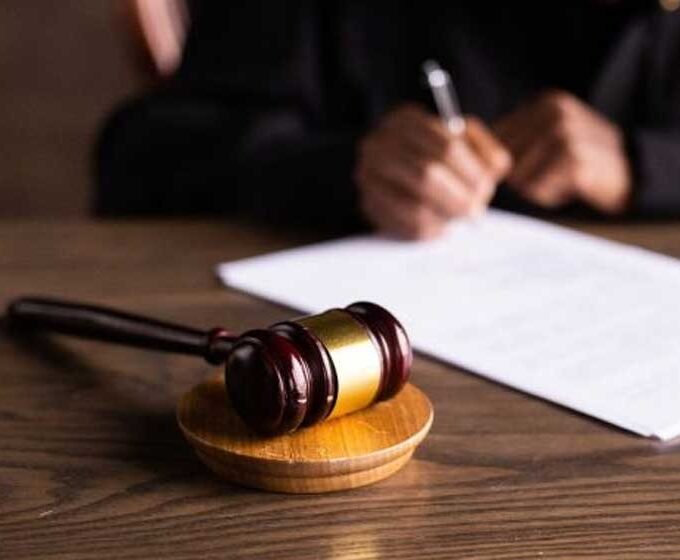When financial pressures become overwhelming, many individuals and small business owners in Woodstock face a difficult question: how can I regain control of my finances while protecting my future?
While often misunderstood, bankruptcy is a legal process designed to offer a fresh start to those burdened by unmanageable debt. Working with an experienced Woodstock bankruptcy lawyer can make this complex process clearer and more manageable.
This article aims to explain bankruptcy, the different types available, and why consulting a bankruptcy lawyer in Woodstock can be an essential step toward financial recovery.
The Purpose of Bankruptcy: A Legal Safety Net
Bankruptcy law exists to help individuals and businesses who cannot meet their financial obligations. It provides a structured way to eliminate or reorganize debts under federal law, while offering creditors a fair means of repayment.
Many people associate bankruptcy with failure or loss, but in reality, it is a tool for financial rehabilitation. It allows debtors to discharge certain debts, stop collection actions, and rebuild their financial stability over time.
A Woodstock bankruptcy lawyer helps clients navigate this process, ensuring they understand their rights and the long-term implications of their decisions.
Common Reasons People Consider Bankruptcy
There are many circumstances that lead individuals or businesses to consider filing for bankruptcy. Some of the most common include:
- Job loss or reduced income: When a primary source of income disappears, even temporary setbacks can create mounting bills and credit card debt.
- Medical expenses: Uninsured or unexpected health crises remain one of the top causes of personal bankruptcy in the United States.
- Divorce or separation: The financial consequences of ending a marriage—such as splitting assets or paying support—can lead to financial strain.
- Business debt: Small business owners often take personal responsibility for loans or lines of credit, and a business downturn can quickly affect personal finances.
In these situations, consulting a bankruptcy lawyer in Woodstock helps individuals assess whether bankruptcy is the most suitable solution or whether alternative debt relief options might be more appropriate.
Types of Bankruptcy: Chapter 7 and Chapter 13
Bankruptcy is not a one-size-fits-all solution. In most personal cases, there are two main types of bankruptcy filings under federal law: Chapter 7 and Chapter 13.
Chapter 7 Bankruptcy — Liquidation
Chapter 7 is often referred to as “liquidation bankruptcy.” It allows debtors to discharge (wipe out) most unsecured debts—such as credit cards and medical bills—after liquidating non-exempt assets.
However, many filers keep essential property like their home, car, and personal belongings through exemptions allowed under Georgia law. A Woodstock bankruptcy lawyer can explain which assets qualify for protection and help clients file the necessary paperwork accurately.
This form of bankruptcy is generally suitable for individuals with limited income and few assets, offering a relatively quick resolution—typically within three to six months.
Chapter 13 Bankruptcy — Reorganization
Chapter 13, also known as “reorganization bankruptcy,” is designed for individuals with a steady income who want to keep their assets while repaying some portion of their debt.
Under Chapter 13, the court approves a repayment plan—usually lasting three to five years—based on the debtor’s income and expenses. Once the plan is completed, the remaining eligible debts are discharged.
A bankruptcy lawyer helps clients develop realistic repayment plans, communicate with creditors, and ensure compliance with court requirements.
The Bankruptcy Process: Step by Step
Although each case varies, the general bankruptcy process involves several key stages:
- Initial consultation and evaluation: The lawyer reviews the client’s financial situation, debts, assets, and income to determine eligibility.
- Filing the petition: Legal documents are filed with the bankruptcy court, initiating an automatic “stay” that halts most collection actions.
- Meeting of creditors (341 meeting): The debtor answers questions under oath from the bankruptcy trustee and any creditors who attend.
- Asset review or repayment plan: Depending on the type of bankruptcy, assets may be liquidated or a payment plan established.
- Debt discharge: Upon completion, the court releases the debtor from liability for qualifying debts, providing a financial fresh start.
Throughout these steps, a Woodstock bankruptcy lawyer ensures all filings are accurate, deadlines are met, and the debtor’s rights are fully protected.
Understanding the Role of a Bankruptcy Lawyer
A bankruptcy lawyer does more than simply file paperwork. Their role includes:
- Providing legal advice: Helping clients understand eligibility, exemptions, and consequences of filing.
- Preparing and reviewing documents: Ensuring accuracy in all disclosures and petitions.
- Representing clients in court: Advocating during hearings and communications with trustees and creditors.
- Protecting against errors or fraud claims: Missteps in bankruptcy filings can result in case dismissal or legal penalties, making professional guidance essential.
A qualified bankruptcy lawyer in Woodstock understands local court procedures, trustee expectations, and how federal bankruptcy laws interact with Georgia’s specific exemption rules.
Life After Bankruptcy: Rebuilding Financial Health
Filing for bankruptcy is not the end of one’s financial story. While it remains on a credit report for several years, many individuals find they can begin rebuilding credit sooner than expected. Responsible use of secured credit cards, timely payments, and consistent budgeting can gradually improve financial standing.
Moreover, bankruptcy offers emotional relief from persistent creditor calls and financial anxiety, allowing individuals to focus on stability and long-term goals.
For more information about federal bankruptcy law and consumer rights, the U.S. Courts Bankruptcy Basics resource provides a clear overview of the process and its implications.
Conclusion
Bankruptcy is a serious but legitimate path to financial recovery for those struggling with overwhelming debt. Understanding the process, from eligibility to discharge, can reduce uncertainty and help individuals make informed decisions.
A knowledgeable Woodstock bankruptcy lawyer can guide clients through each step, ensuring their rights are protected and they emerge from the process with greater financial clarity and confidence. By viewing bankruptcy as a structured opportunity for renewal rather than defeat, individuals can begin to rebuild a stronger and more stable financial future.














